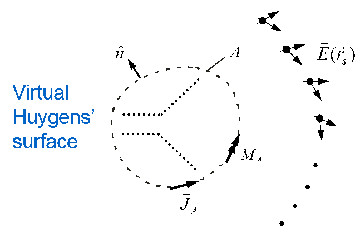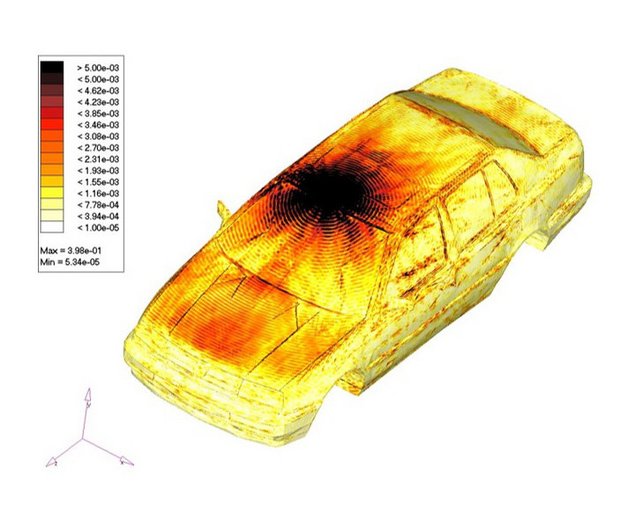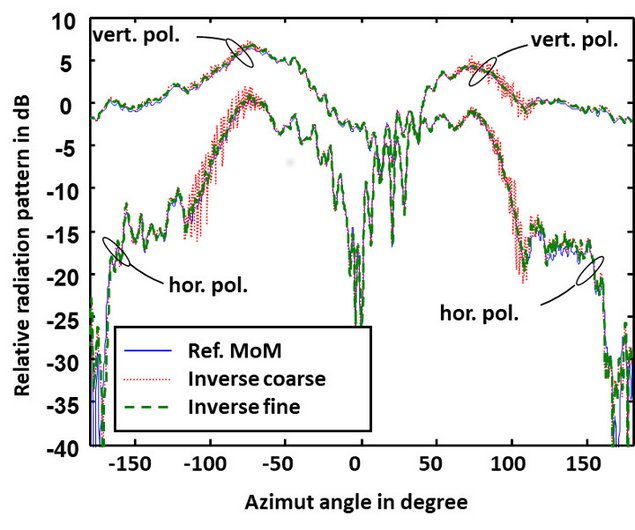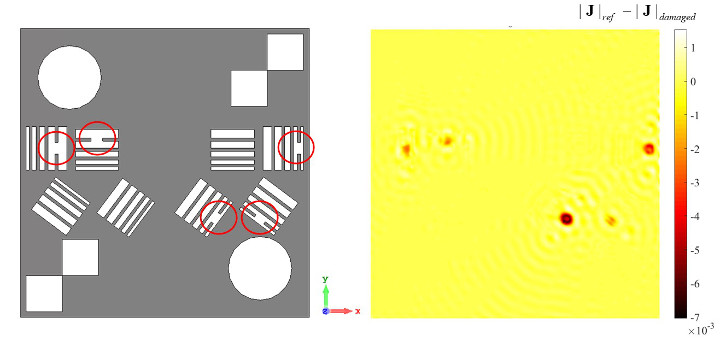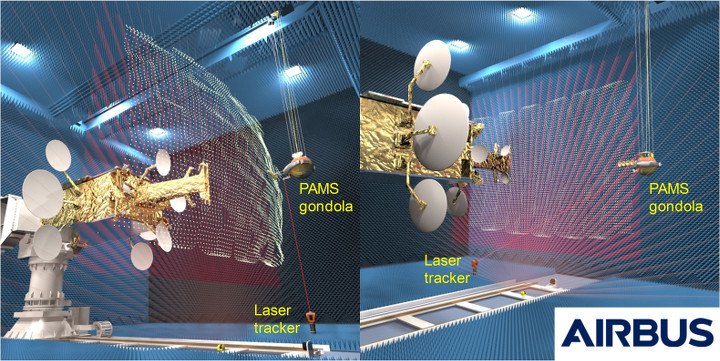Inverse Equivalent Source Methods
Inverse equivalent source methods are a highly-flexible and meanwhile also computationally efficient methodology for near-field far-field transformations as well as the diagnostics of antennas and scattering objects. Inverse problems belong to the hardest to solve problems in electromagnetics. They are usually ill-posed and their iterative solution requires the repeated evaluation of the corresponding forward operators.
In our research, we start from Huygens‘ principle and work with equivalent surface sources on a suitably chosen Huygens surface. The surface sources are discretized using triangular meshes (or meshless basis functions) and the source expansion coefficients are related to the available near-field samples of the field (typically obtained from measurements) by evaluating the pertinent radiation integrals. The resulting linear equation systems are solved in a least mean square sense by employing an iterative solution strategy, where the matrix vector products are evaluated very efficiently by following the concepts of the multilevel fast multipole method. Very important in this respect is the correction of the measurement probe influence. In order to compete with standard field transformation approaches for regular sampling, it is necessary to push the performance of the algorithms to its limits.
Out of our research of the last more than ten years, a very powerful suite of transformation and imaging algorithms has evolved, which are known as FIAFTA (Fast Irregular Antenna Field Transformation Algorithm). These algorithms are operative at various industrial and scientific institutions and we are continuously working on the implementation and investigation of new functionalities together with further performance enhancements.
Our algorithms are in particular indispensable for the transformation of irregularly located measurement samples as in the case of the Portable Antenna Measurement Systems (PAMS) by Airbus Defence and Space or in the case of measurements performed by UAVs. More recently, the scope of our FIAFTA algorithms has been extended to the mm-wave imaging of arbitrary test objects and to the transformation of field data collected above conductive and dielectric ground.
The Fast Irregular Antenna Field Transformation Algorithm (FIAFTA)
Contact: Prof. Dr.- Ing. Thomas Eibert
